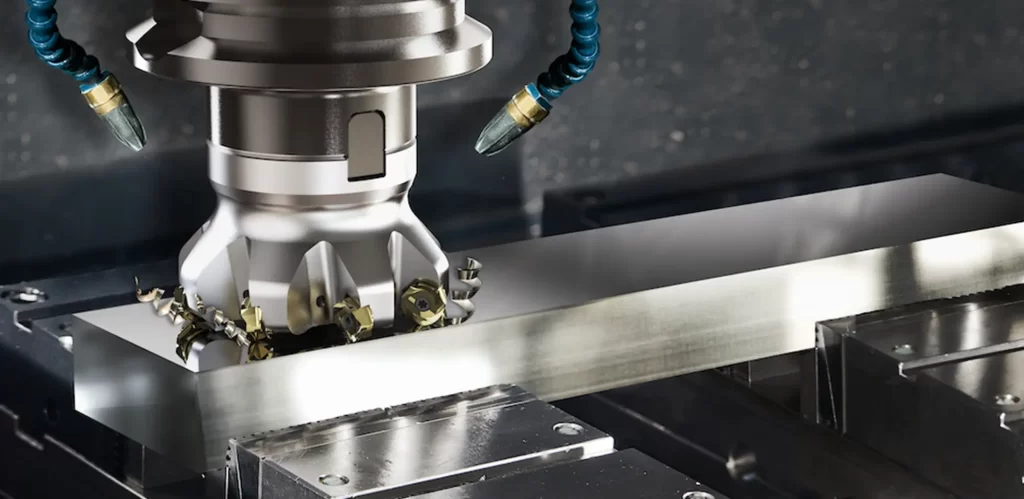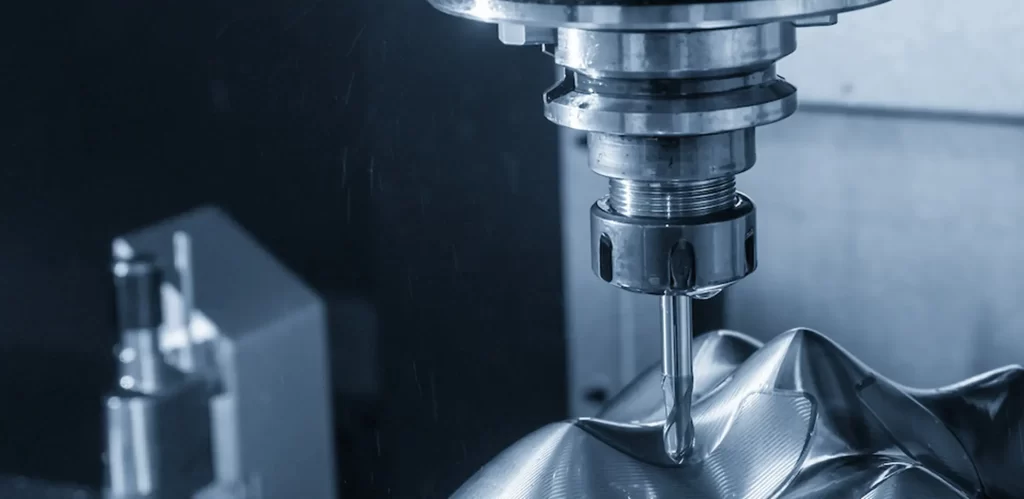BLOG » What is Milling: All you need to know about it
What is Milling: All you need to know about it
Milling is a type of machining process used to create various mechanical components made of materials such as plastic and metal. This method results in highly precise finished products thanks to the precise tools used to manufacture.
In this article, we will introduce the types of machines used in milling, the various tools employed, and the shapes that can be produced through milling.
What is Milling
Milling is a machining process that involves cutting tools, known as milling cutters, that rotate at high speeds while cutting into a workpiece fixed to a worktable.
By utilizing various types of cutting tools, it is possible to answer a multitude of needs. To list a few: flat surfaces, curved surfaces, hole drilling, and groove cutting.
Complex shapes can be manufactured through this process thanks to its three-dimensional movement. In fact, during manufacturing the milling cutters are moving vertically, while the worktable holding the workpiece slides horizontally. Nonetheless, it’s important to note that the capability to machine certain shapes depends on the specific milling machine, so careful consideration is necessary.
Milling machines are classified into two main types: “vertical-type” milling machine has a spindle perpendicular to the worktable, and it is the most common type of milling machine. On the other hand, a “horizontal-type” milling machine has a spindle parallel to the worktable’s surface.
Key Machines Used in Milling
Universal Milling Machine
NC Milling Machine
Machining Center
The machining center is a type of milling machine that not only allows numerical control but also enables automatic tool changes. Unlike other machines, the machining center can simultaneously hold multiple tools. This innovation allows for automatic tool changes, eliminating the need for manual tool swapping and improving work efficiency.
In order to provide the best quality to our customers, this is the main machine we as meviy are using to manufacture our milled parts.
NC Gear Cutting Machine
Types of Milling Tools
Face Milling Cutter

End Mill
Groove Milling Cutter
The groove milling cutter operates by rotating circular blades while moving parallel to the workpiece to create grooves. The width and depth of the grooves are determined by the blade’s width and outer diameter to some extent.
Groove milling cutters offer faster cutting speeds and high precision compared to using end mills. They are especially useful for machining numerous long and deep grooves.
Plain Milling Cutter
A plain milling cutter has blades along the outer surface of its cylindrical shape. It is attached to horizontal milling machines and used for flat surface machining.
Plain milling cutters provide efficient material removal, although they may have slightly lower precision compared to face milling cutters.

